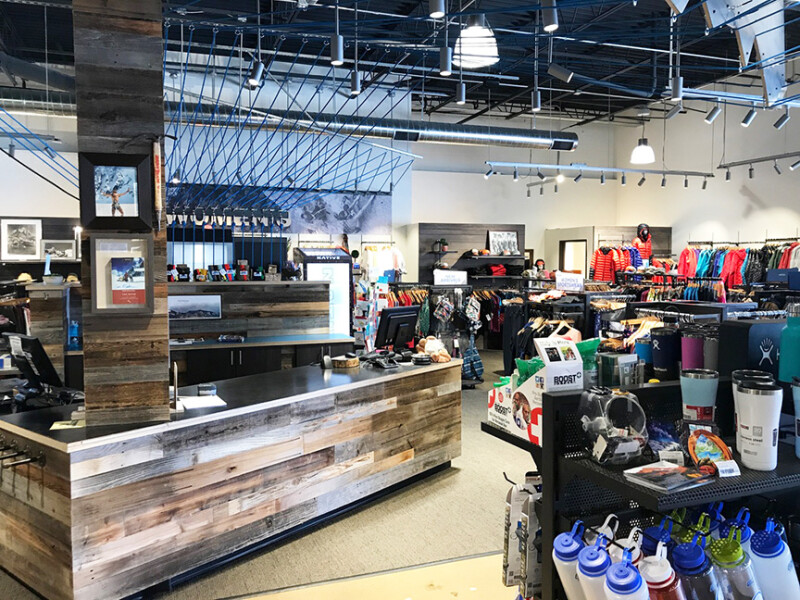It’s easy to get caught up in the retail hamster wheel and quickly churn through customers in an effort to improve efficiency. But increased efficiency often limits the ability to fully understand a customer’s unique emotional needs. Unless we are tuned into what truly motivates folks to walk into the store in the first place, we likely sell them only what they came in to buy. Which, in most cases, is shoes. What a missed opportunity.
If you want to sell more stuff, you need to rethink your fitters’ emotional plan.
There are five primary emotional motivators that drive customers into a specialty run store: General fitness, health, a goal, community and self-expression. Quickly determining a customer’s driving motivator should be your main goal. Without this golden nugget of knowledge, fitters are probably not vibing with the customer — and the customer isn’t vibing with them. Sure, the interaction might be good, but good is forgettable.
Having a solid plan to ascertain a customer’s emotional motivator is the first step towards something unforgettable. It’s also what ultimately inspires customer loyalty, trust in your brand and hefty register tickets.
Lessons From the Library
I have a friend who works as a children’s librarian. She spends her days staying on top of newly released titles, reshelving books left behind by patrons and maintaining a tidy and welcoming area to ensure a positive library experience. But more important than any of these duties is her keen ability to meet the literary needs of the next kid who walks in the door. Sounds sort of familiar, doesn’t it?
All librarians at her branch are trained to facilitate each guest’s interaction using a series of open-ended questions. The inquiry includes questions like:
• Do you know which book you’re looking for?
• Is there any particular subject you enjoy?
• Are there any titles you’ve liked in the past? Any authors?
They gather as much information as possible so they can make the most personally relevant suggestions.
One day my friend encountered a young boy, maybe eight years old, browsing the teen section. She set down her dust rag and welcomed him in. “Is there anything I can help you find?” she asked. He said yes, so she ran through the triage and made some suggestions. He didn’t like any of them. She asked more questions and offered more options, but he wasn’t into those, either. He became frustrated.
After a couple more failed offerings, my friend was deflated. She’d diligently presented options and had none left. Just as she was about to give up, the kid finally relented. He told her all he wanted was a big book. A thick and heavy, hardcover book with a ton of pages. “I want my friends to see me carrying it around and think I’m super smart,” he said.
This young patron had no intentions of reading the library book. He simply wanted one to help him alter his image. His visit was all about finding a book that, by its sheer size, would impress his peers. What was his driving emotional motivator? Self-expression, most likely.
This situation changed how my friend approaches library patrons. She fashioned a fresh strategy for more readily understanding each person’s unique needs and wants. Since then, before she dives into the standard librarian questions, she starts interactions by asking, “What are your plans for this book?”
In our world the equivalent question would be, “So, what are your plans for these shoes?” It’s similar to something you’re already asking, but different enough to likely reveal the customer’s emotional motivator. And once you know it, you can adjust your approach accordingly. Pretty sure you’d manage a customer driven in by self-expression differently than one who’s concerned about their health.
“What are your plans?” also gives clues that allow you to suggest relevant products and information the customer may not even know about. It also creates space for the occasional one-off shopper who is using the shoes for, well, anything besides the obvious.
Follow The Three-Step Plan
Once you identify a customer’s emotional motivator, follow the following three-step plan to quickly meet their unique needs and wants. Holding yourself accountable to the plan every time you sit down with a customer ensures you’ll reach smart solutions quicker.
1. Learn Their Perceived Needs and Wants. Ask what brought them in today.
2. Learn Their Unperceived Needs and Wants. Ask additional questions, then match their answers to relevant inventory items.
3. Identify Their Discreet Wants. Ask the customer what you missed (Which is not to be confused with the worn out retail question, “Is there anything else I can get for you?” Ugh, never ask that question again!)
Can you imagine a world where everyone on your staff is using a plan to quickly understand each entering customer’s main emotional motivator? Can you imagine them using this motivator to make smart and relevant suggestions to meet the customer’s perceived needs, unperceived needs and discreet wants?
I sure can! It’s a world where customer satisfaction, UPTs, average tickets and fitting efficiency are better than they’ve ever been.
Remember, the smallest gestures affect the greatest changes. So go out and make a few minor shifts in the age-old fitting paradigm and reshape the overall feel of the customer experience.







